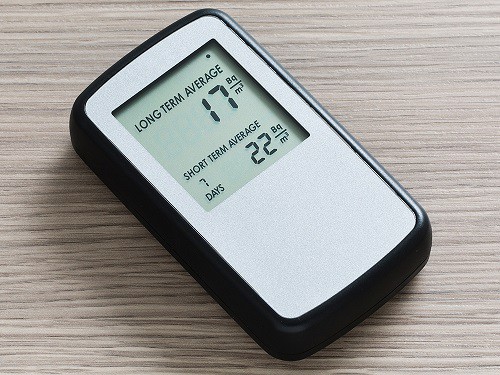
 Canadians are being exposed to dangerous levels of radon gas right in their own homes, according to the Canadian Lung Association, which is urging residents to have their homes checked for exposure.
Canadians are being exposed to dangerous levels of radon gas right in their own homes, according to the Canadian Lung Association, which is urging residents to have their homes checked for exposure.
November is Lung Month in Canada, and this year the Lung Association challenges all Canadians to “Take a Breather” and share their stories of why breathing matters to them. “Every day we breathe an average of 22,000 times. Most of us never stop to think about our breath,” says Debra Lynkowski, CEO of The Canadian Lung Association. “Breathing is essential, and it is important to appreciate each and every breath you take.”
Radon gas exposure is the second leading cause of lung cancer after smoking. Radon is a odourless and colourless radioactive gas produced from the decay of uranium, a mineral found in minute quantities in all rocks and soils.
Radon gas in homes can make its way into the lungs and damage cellular DNA, potentially lead to lung cancer.
“It’s a radioactive gas that’s around us naturally everywhere,” says Robert MacDonald with the Nova Scotia Lung Association. “When you’re exposed to it at a high concentration level for an extended period of time in an enclosed area, that’s when it tends to become dangerous to someone’s health.”
The Lung Association is distributing 500 radon detection kits to homes across Nova Scotia, hoping to raise awareness of the issue and encourage others to buy detection kits (which run about $30 each). Last year, the community of Tantallon, east of Halifax, which is known to have high concentrations of radon, received 200 free radon kits, with 62 per cent of homes reporting back that their radon levels were above the recommended health guidelines.
A 2012 Health Canada study identified an average of 6.9 per cent of Canadians living in households with radon levels higher than the 200 Bq/m3 guideline (radioactivity is measured in Becquerels per cubic metre). The study found that the highest average levels were detected in homes in New Brunswick, Manitoba, Saskatchewan and Yukon Territory, and overall, 45 per cent of the regions tested had at least 10 per cent of homes above the guideline level.
Highest in the country is New Brunswick, with 21 per cent of homes testing above recommended levels. The New Brunswick Lung Association is asking the provincial government to help citizens with a radon mitigation tax credit. For homes that are found to have high levels of radon, the remedy is a sub-slab depressurization system, simple to install at a cost of between $2,000 and $3,000 including material and labour.
About 16 per cent of lung cancer deaths in Canada are due to high levels of radon exposure. The Lung Association says that any enclosed space such as a home, office building or school may be collecting dangerous levels of radon, which is why testing is essential. (And, tests are more accurate during the colder months, which is why you should go get a kit now!)
Leave a Reply
You must be logged in to post a comment.



 Share
Share Tweet
Tweet Share
Share




Comment